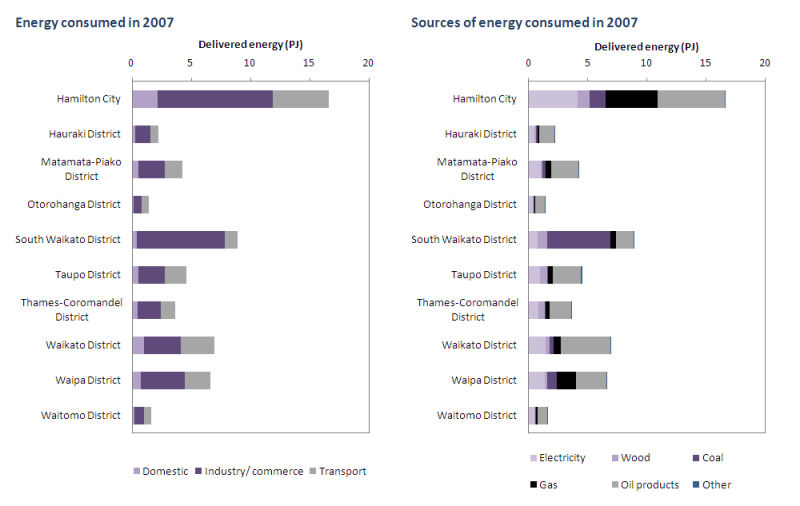Total energy consumption
Why we monitor total energy consumption
Energy is an important component of our everyday lives. We use energy to heat our homes and our water, to cook our food, to run appliances and for transportation. Energy is also vital to industry and the economy of the country.
Energy can be produced from renewable and non-renewable sources. It is important we use our resources carefully to ensure future generations can meet their energy needs. Inefficient energy production and use results in natural resources being used at a greater rate than is needed. This affects our region’s natural and physical resources. Inefficient use of fossil fuels also gives off greenhouse gases, which affect our environment.
However, electricity generation from renewable sources can also affect the environment. For example:
- productive land is lost when hydro dams are built and river valleys flooded
- native fish are unable to migrate up rivers with hydro dams
- wind farms create noise issues for neighbouring residents.
We need to sustainably manage both our renewable and non-renewable sources of energy.
Waikato Regional Council measures the amount of energy consumed in the Waikato region. Energy used to generate electricity is excluded in order to avoid double-counting
Results - data and trends
The main sources of energy in the Waikato region are electricity, coal, wood, natural gas, petrol, diesel and other oil products. Around 57,246 terajoules (TJ) of energy were used in the region during 2007. A joule is a unit of energy and heat, with one joule of power per second equaling one watt; a terajoule = 1 x 1012 joules.
This energy was mainly used by:
- industry (59% of total)
- commercial and private transportation (30% of total)
- households (11% of total).
Energy consumption in 2007
The graph below left shows the annual amount of energy consumed (TJ/year) by transport, domestic users and industries/commercial establishments in the Waikato region and Hamilton in 2007. The average energy use per person was 123 gigajoules (GJ) for the Waikato region and 144 GJ for the Hamilton city area.
The graph below right shows the main sources of energy used in the Waikato region and in Hamilton during 2007. About 21 per cent of the total energy consumed came from renewable sources.

Methods - how we monitor
More information
When this indicator is updated
The data presented in this indicator represents a baseline from which future changes in energy consumption can be compared. This indicator is currently under review.
Resources
Energy Efficiency and Conservation Authority (EECA): EECA is the government agency that works to improve the energy efficiency of New Zealand's homes and businesses, and encourages the uptake of renewable energy.
Energywise: This site is full of practical information, advice and tools to help you make those choices at home and on the road.



To ask for help or report a problem, contact us
Tell us how we can improve the information on this page. (optional)